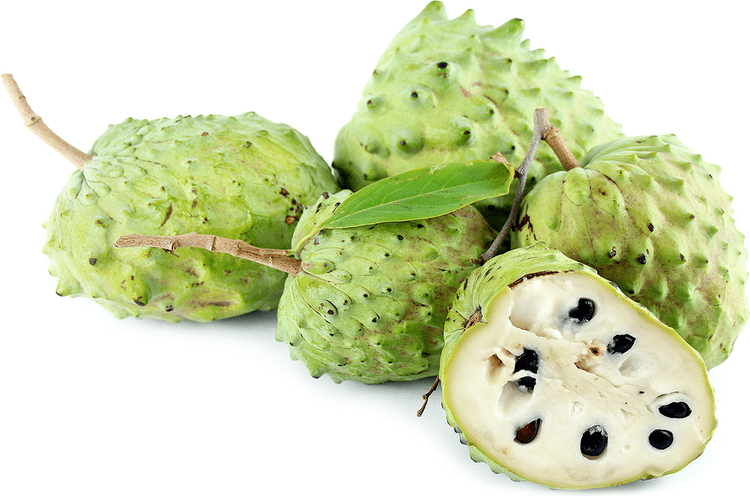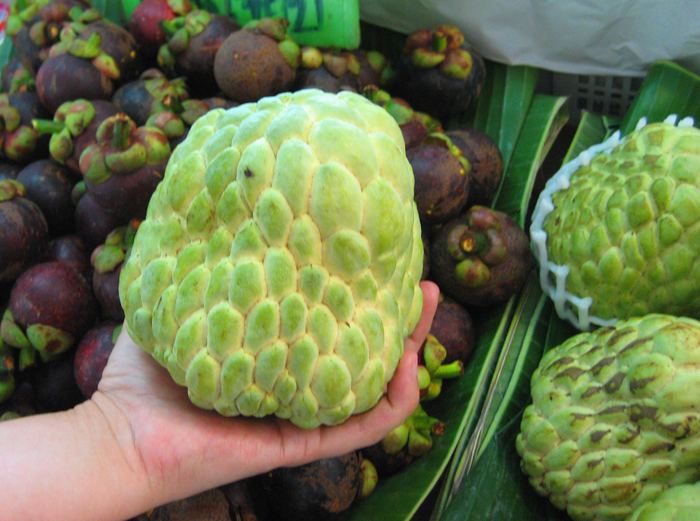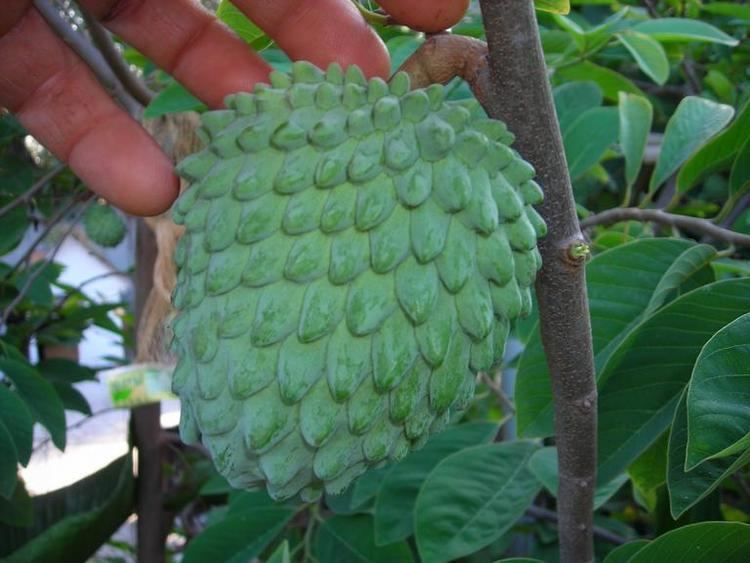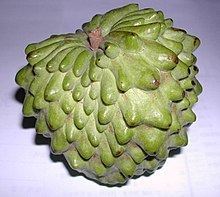Species A. × atemoya | Genus Annona Scientific name Annona × atemoya | |
 | ||
Similar | ||
Atemoya review weird fruit explorer ep 54
The atemoya, Annona × atemoya, is a hybrid of two fruits – the sugar-apple (Annona squamosa) and the cherimoya (A. cherimola) – which are both native to the American tropics. This fruit is popular in Taiwan, where it is known as the "pineapple sugar apple" (鳳梨釋迦), so is sometimes wrongly believed to be a cross between the sugar-apple and the pineapple. In Cuba, this fruit is called anón, and in Venezuela chirimorinon. In Israel and Lebanon, the fruit is called achta. This is different from the Achta that is used in many Lebanese desserts, including ice cream, which is actually the skimming of fresh milk or cream.
Contents

An atemoya is normally heart-shaped or rounded, with pale-green, easily bruised, bumpy skin. Near the stem, the skin is bumpy as it is in the sugar-apple, but become smoother like the cherimoya on the bottom. The flesh is not segmented like that of the sugar-apple, bearing more similarity to that of the cherimoya. It is very juicy and smooth, tasting slightly sweet and a little tart, reminiscent of a piña colada. The taste also resembles vanilla from its sugar-apple parent. Many inedible, toxic, black seeds are found throughout the flesh of the atemoya. When ripe, the fruit can be scooped out of the shell and eaten chilled.

Atemoya (Annona cherimola × squamosa) was developed by crossing cherimoya (A. cherimola) with sugar-apple (A. squamosa).
The first cross was made in 1908 by P.J. Wester, a horticulturist at the USDA’s Subtropical Laboratory in Miami.

The resulting fruits were of superior quality to the sugar-apple and were given the name "atemoya", a combination of ate, an old Mexican name for sugar-apple, and "moya" from cherimoya.

Subsequently, in 1917, Edward Simmons at Miami’s Plant Introduction Station successfully grew hybrids that survived a drop in temperature to 26.5 °F, showing atemoya’s hardiness derived from one of its parents, the cherimoya.

The atemoya, like other Annona trees, bears protogynous, hermaphroditic flowers, and self-pollination is rare. Therefore, artificial, hand pollination almost always guarantees superior quality fruits. One variety, 'Geffner', produces well without hand pollination. 'Bradley' also produces fair crops without hand pollination, but the fruit has a habit of splitting on the tree. Atemoyas are sometimes misshapen, underdeveloped on one side, as the result of inadequate pollination.
An atemoya flower, in its female stage, opens between 2:00 and 4:00 pm; between 3:00 pm and 5:00 pm on the following afternoon, the flower converts to its male stage.
